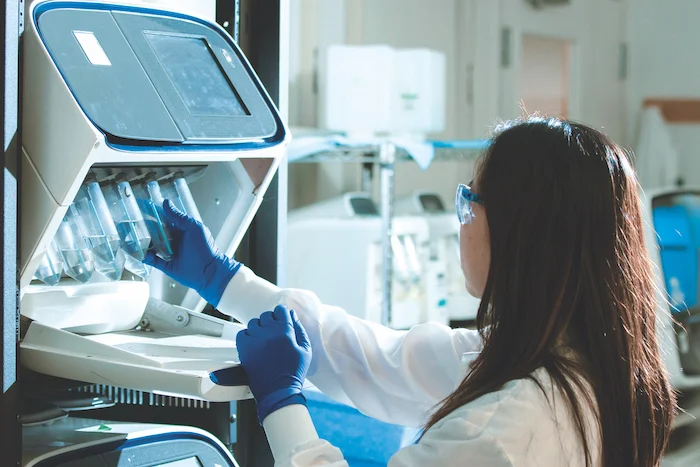News & Articles

How Technology Is Shaping Cancer Treatment In Radiation Oncology

As a technophile, Dr Lee Kuo Ann, Senior Consultant, Radiation Oncology at Parkway Cancer Centre, was intrigued by radiation oncology because it applies physics, engineering, and computing to the art of medicine. This issue, he shares with us insights on how the field is evolving for the future.
Compared to the past, radiation oncologists now spend more time helping patients understand and choose the treatment that is right for them, especially as technology used for cancer treatment is now more complex.
Radiotherapy (RT) planning, for instance, is now more time-consuming to plan. In the past, I could determine nasopharyngeal cancer radiation fields and shielding in minutes. However, now it can take hours to individually localise the tumour and each organ.
How new technology helps in treating cancer
The most important developments in RT are concerned with the speed and accuracy of delivery of X-rays to cancer tumours.
This allows us to escalate doses for better cancer control, whilst decreasing doses to critical organs for fewer side effects. It also permits stereotactic body RT (SBRT) which delivers very high ‘ablative’ doses to small tumours in five or fewer days of treatment.
Changes in fractionation—that is, the dose of each daily treatment—have also shortened treatment courses whilst maintaining cancer control and side effects.
How RT has become more accurate
- Accurate imaging
We are now in the ‘3D’ era with CT and MRI scans. Furthermore, PET scans help ‘light up’ tumour tissue by looking at the level of cell activity.
- Intensity-modulated RT (IMRT)
Compared to older techniques, IMRT can create almost any shape to fit the tumour and spare normal organs.
- Image Guidance
Image guidance built into therapy machines ensures that the tumour is in the correct position before treatment.
- Motion Management
Motion management helps treat tumour when it is in the chosen position (i.e. inspiration or expiration). This reduces field size and reduces dosage to critical surrounding structures.
Addressing patients’ concerns
The concern, if any, is that of cost, which rises with the complexity of treatment. On one hand, most breast cancer and rectal cancer treatments can be treated just as well with cheaper ‘3D conformal’ therapy.
On the other hand, paying more for advanced techniques is worth it as it can reduce long-term side effects. More advanced techniques are also necessary when the tumour is close to critical organs.
Latest innovations and research on cancer treatment
We can expect new cancer treatment breakthroughs in many areas in the next 5–10 years:
Proton therapy
Proton therapy is like playing golf. If you putt a ball at just the right speed and direction, the ball will glide through the grass, depositing some energy along the way, but once it drops into the hole, it loses all of its energy, and nothing comes out on the other side.
The technology isn’t exactly new, but availability was limited by the size and cost of machines. Today, we are in for an exciting time with three proton centres being built in Singapore, including one at Mount Elizabeth Novena Hospital.
FLASH RT
It's been shown in cell and animal studies that if radiation can be delivered at an extremely high dose rate—literally in a flash—we can preferentially kill cancer cells whilst sparing normal tissue.
AI and adaptive RT
Software is being developed to automate RT planning in minutes instead of hours. It may be feasible to adapt the RT plan to patient’s anatomy which can change daily due to organ motion, weight loss and other factors.
New drug combinations
Traditionally, chemotherapy has been used. But now new ‘targeted’ drugs like Xevinapant and PARP-inhibitors affect the ability of cancer to repair radiation-induced damage.
Using imaging to boost high risk areas
PET CT and MRI scans can identify more active or resistant parts of a tumour for boost with stronger radiation doses. Early studies are showing that if these ‘stubborn spots’ can be targeted, we might increase cancer control.
Predicting cancer risks and responsiveness
Cancer genetic studies may help tailor the delivery of radiation. For example, it may identify which cancers need higher doses or larger fields and which do not.
Greater role in oligometastatic cancer
Traditionally, once cancer has spread, RT was considered to only have a palliative role. The reality, however, may be that if you can destroy metastases, you might cure the patient or extend his life.
We have seen how technology, from physics to biology, and engineering to computing, has improved the delivery of RT. Thankfully, new developments are on the horizon and technologies yet to be dreamed up will keep the future of RT bright.
| POSTED IN | Cancer Treatments |
| READ MORE ABOUT | Breast Cancer, Nasopharyngeal Cancer |
| PUBLISHED | 01 January 2021 |
